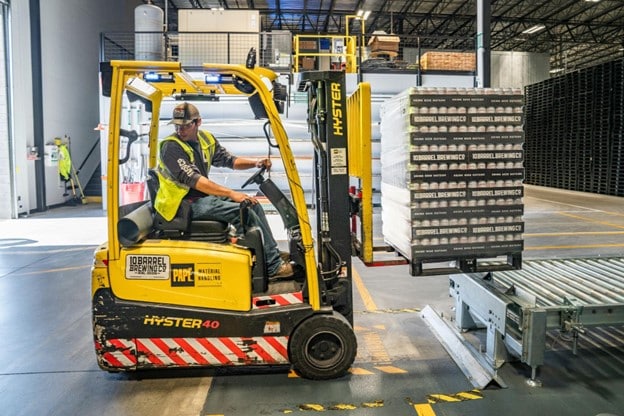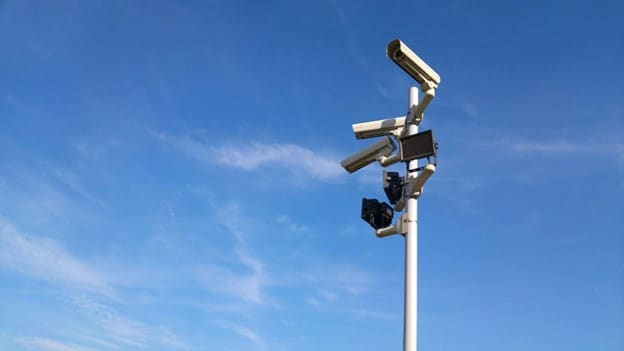Warehouse security is crucial to the overall success and safety of your business. With large quantities of valuable goods and constant logistical activity, warehouses can be a prime target for theft, vandalism, and even internal mismanagement. A robust camera system not only deters criminal activity but also improves operational oversight and employee safety. However, choosing the right system involves understanding your facility’s specific needs and the various technologies available.
This comprehensive guide will help you explore the factors to consider when selecting the best security camera system for warehouse, ensuring both security and efficiency are maximized.
Assessing Your Warehouse Layout and Coverage Requirements
Before investing in any camera system, it’s essential to assess the layout and characteristics of your warehouse. Each facility has unique security needs based on its physical layout, the nature of goods stored, and operational workflow. To get started, consider the following aspects:
Key Areas for Camera Placement
- Entry and Exit Points: Cameras should be placed at all entry and exit points, including loading docks and employee entrances. Monitoring these areas helps track who is entering and leaving the premises and can be crucial in case of theft or security incidents.
- Aisles and Storage Areas: Warehouses often have high-density storage areas with racks and shelves where goods are stored. Monitoring these aisles ensures visibility into product movement and reduces opportunities for theft.
- High-Risk Zones: These may include areas where expensive or sensitive goods are stored, or where hazardous materials are handled. High-value or vulnerable items require additional surveillance to ensure they are not tampered with.
- Perimeter Monitoring: If your warehouse includes outdoor areas, such as parking lots, yards, or receiving docks, perimeter cameras can detect trespassing or unauthorized activity before it reaches the main building.
- Common Areas: Employee break rooms, administrative offices, and other shared spaces can be covered to ensure the safety of your workforce.
Eliminating Blind Spots
Conducting a thorough walk-through of your warehouse is crucial to identify any blind spots or areas where surveillance might be difficult. Large warehouses, especially those with complex layouts, can present challenges such as high shelves or obstructions that block camera views. Strategically placed cameras can eliminate these blind spots, ensuring that no area goes unwatched.
Mapping out your warehouse and identifying vulnerable areas helps determine how many cameras you’ll need and where to position them for maximum coverage.
Choosing the Right Camera Types and Features
Cameras come in various designs, each suited to different purposes. To ensure you select the right camera system, you need to be familiar with the different types and their specific applications.
Camera Types
- Dome Cameras: These are popular for indoor use due to their compact design and 360-degree coverage. Dome cameras are typically vandal-resistant, making them harder to tamper with. Their wide field of view makes them perfect for areas with a lot of foot traffic or where you need broad coverage.
- Bullet Cameras: These are best for long-range surveillance and outdoor use. Bullet cameras are highly visible, making them a good deterrent against criminal activity. They are ideal for covering large, open areas like parking lots or loading docks.
- Pan-Tilt-Zoom (PTZ) Cameras: PTZ cameras offer the advantage of remote control, allowing you to pan, tilt, or zoom to focus on specific details. These are great for monitoring large spaces where flexible camera movement is necessary. PTZ cameras are especially effective for following suspicious activity in real-time.
- Thermal Cameras: If your warehouse operates in low-light conditions or at night, thermal cameras may be beneficial. These cameras detect heat signatures, making them ideal for identifying human movement or machinery operation in poorly lit environments.
- Fisheye Cameras: For a panoramic view, fisheye cameras provide 180-degree or 360-degree views in a single shot, reducing the need for multiple cameras. These cameras work well in open spaces like warehouse floors.
- IP Cameras: Internet Protocol (IP) cameras offer higher resolution than traditional analog cameras and allow you to view video footage remotely over a network. IP cameras are ideal for large warehouses where remote monitoring is necessary.
Key Features to Consider
When selecting cameras, pay attention to these important features that can enhance their effectiveness:
- Resolution: High-resolution cameras (1080p or 4K) provide clear, detailed images, which can be essential for identifying faces, license plates, or other important details in security footage.
- Night Vision: Many warehouses operate around the clock, meaning nighttime surveillance is critical. Cameras equipped with infrared (IR) night vision allow clear monitoring even in complete darkness.
- Weatherproofing: For outdoor cameras, ensure they are weatherproof and capable of withstanding extreme temperatures, rain, and dust.
- Vandal-Resistance: Cameras in vulnerable areas should be tamper-resistant or housed in protective casings to prevent vandalism.
- Field of View: A camera with a wider field of view can cover more area, reducing the need for multiple cameras.
Incorporating AI-Driven Analytics for Enhanced Security
With advancements in AI, modern warehouse security systems go beyond simple video recording and monitoring. AI video analytics can drastically improve how warehouses handle security, operational efficiency, and incident response.
Benefits of AI-Powered Security Systems
- Real-Time Threat Detection: AI systems, such as those offered by Coram AI, use advanced algorithms to detect unusual behavior, potential threats, or unauthorized personnel in real-time. The system can send instant alerts to your security team, allowing them to respond proactively.
- Gun Detection: One of the critical features Coram AI offers is real-time firearm detection. In the unfortunate event of an active shooter situation, AI-powered systems can instantly detect and track suspects across multiple camera feeds, giving authorities valuable time to intervene.
- People and Asset Tracking: AI tools like Coram AI’s ‘Journey’ feature allow businesses to track the movement of individuals or assets across multiple camera feeds. This capability is particularly useful for large warehouses, where manually monitoring the entire space would be impractical.
- Reduced False Alarms: AI can help reduce the number of false alarms by distinguishing between real threats and benign activities. This cuts down on wasted time for security teams and ensures that resources are focused on genuine risks.
Incorporating AI into your security system enhances both protection and efficiency, allowing your team to manage more with less effort.
Prioritizing Scalability and Integration
Your camera system should not only meet your current security needs but also have the capacity to grow with your business. As your warehouse expands or changes, your security requirements may increase, necessitating more cameras or enhanced coverage.
Scalability
When selecting a camera system, ensure that it is scalable. IP-based systems, for example, are ideal for scalability. Adding new cameras to the network is straightforward, and IP cameras can often be powered via Power over Ethernet (PoE), reducing the need for additional wiring.
Integration with Existing Systems
In a well-rounded security setup, your cameras should integrate seamlessly with other systems, such as access control, fire alarms, or employee identification systems. This can allow for more streamlined operations, such as locking down certain areas if suspicious activity is detected or cross-referencing video footage with access control logs.
Modern systems are often compatible with various third-party technologies, so be sure to choose a solution that can easily interface with your existing systems.
Ensuring Data Security with On-Premises Processing
As warehouses increasingly rely on digital systems, data security becomes a critical concern. Many camera systems store footage in the cloud, but this can expose your data to external threats. Opting for on-premises storage and processing ensures that sensitive data remains under your control and protected from hacking or breaches.
Advantages of On-Premises Processing
- Data Privacy: On-premises storage keeps video data within your facility, giving you greater control over who has access to it. This is particularly important for companies that handle sensitive goods or have regulatory requirements around data privacy.
- Reduced Latency: With on-premises processing, data doesn’t need to be transmitted over the internet, reducing latency and ensuring real-time monitoring without delays.
- Greater Reliability: On-premises solutions are less dependent on internet connectivity, making them more reliable during network outages.
Coram AI offers on-premises processing for all its video analytics, ensuring that your warehouse’s security data remains secure and readily accessible.
Choosing the Right Storage and Archiving Solutions
Warehouses often generate large volumes of video footage, which needs to be securely stored and easily accessible for review when needed. Choosing the right storage solution is essential for maintaining a robust security system.
Cloud vs. On-Premises Storage
- Cloud Storage: Cloud storage is convenient and scalable but comes with security risks, such as data breaches or unauthorized access. Cloud solutions may also incur recurring subscription costs, which can add up over time.
- On-Premises Storage: While on-premises storage may require a higher initial investment in hardware, it offers complete control over your data and reduces the risk of cyberattacks.
Storage Capacity and Retention
Consider the amount of storage your system will require based on your camera resolution, the number of cameras, and how long you need to keep footage. Some industries have regulations around video retention periods, so ensure that your system can comply with these requirements. For example, footage stored for potential legal or compliance purposes may need to be archived for months or even years.
Video Compression and Bandwidth Management
Advanced video compression technologies, such as H.264 or H.265, allow you to store high-quality footage while minimizing storage space. Compression reduces the amount of data needed to store and transmit video, which is particularly useful for large-scale operations where bandwidth and storage can become limiting factors.
Planning for Installation and Maintenance
Once you’ve selected your camera system, the next step is installation. The complexity of installing a camera system in a warehouse depends on the size of your facility, the number of cameras, and the type of cameras being used. It’s important to plan the installation process carefully to ensure maximum coverage and efficiency.
Professional Installation
For large or complex setups, it’s often best to hire professionals for the installation. This ensures that cameras are properly mounted and positioned to cover the necessary areas and that the wiring or network connections are secure. Professional installers can also help with configuring the system to optimize its functionality.
Maintenance and Upkeep
Maintaining your camera system is critical to ensuring long-term security. Routine checks should be scheduled to ensure that cameras are functioning correctly, lenses are clean, and software is up to date. Some systems also offer remote diagnostics, making it easier to identify and address issues before they become critical.
Selecting a Trustworthy Vendor
Your choice of vendor can significantly impact the success of your camera system. It’s essential to work with a provider that offers reliable products and excellent customer service. Look for vendors with a proven track record in warehouse security, such as Coram AI, which specializes in scalable and advanced AI-driven solutions.
What to Look for in a Vendor
- Customizable Solutions: Choose a vendor that offers solutions tailored to your warehouse’s specific needs, rather than a one-size-fits-all approach.
- Customer Support: Reliable technical support is crucial. Ensure the vendor offers prompt customer service and support options, such as warranties and service-level agreements (SLAs).
- Long-Term Partnership: Security is a long-term investment, so select a vendor that can grow with your business and offer updates, maintenance, and scalability as your needs evolve.
Conclusion
Selecting the best camera system for your warehouse is a critical decision that will impact both security and operational efficiency. By thoroughly assessing your warehouse layout, choosing the right camera types, incorporating AI-driven analytics, and planning for future scalability, you can create a security infrastructure that not only protects your assets but also streamlines your operations.
Partnering with a reliable vendor like Coram AI ensures that you’ll have access to the latest in AI-powered security technology, designed specifically to meet the demands of modern warehouses. With the right camera system in place, you can secure your warehouse, protect your workforce, and ensure peace of mind for years to come.





